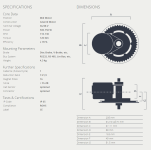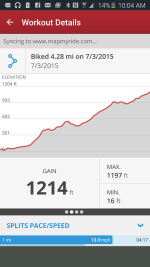Alex Imreh
100 W
Sorry if I opened a topic already discussed or over discussed. Hey admins, if there is a topic where this issue is well discussed please show me the link and delete my topic. A topic resuming present day situation should be useful, discussing openly the painful truth. At present day battery technology all e-bikes can be no more than commuting bikes? Can not be used for real trail or traveling?
Many of us are accustomed with gas enduro bikes, we take for granted one thing that most electric drives CAN NOT do right now as it seems. Some engine producers have thermal protection included in their design but the issue is to have something capable of doing the damn thing not stopping the bike after a few miles when thermal limits are hit.
I am quoting here a designer: ''Hubs are great on streets, can be tuned for low hill climbing but on longer technical uphill trails can easily hit thermal limits. I am stating the results of a few years and almost $100k in experimentation. I know all about the inefficiency and waste of the capitalist structure. When people see a big travel bike, some are going to push its limits. That bike .. is a great example of this. I see big travel, fat knobbies, and I think, that would be a blast to fling down some hills. Being an engineer though, I know for a fact that the hub motor simply can't handle some of the uses the styling and other components suggest. Consumers aren't aware of this stuff and will beat these bikes into the ground. A large percentage won't ride hard but they'll read the critical reviews of the guys that do.''
Also geared engines seem to better use the energy contained from batteries, another big question is - what is the longest uphill your drivetrain can sustain? A friend of mine who built 2 bikes in Austria says that he can do no more than 20kms of trail with 1400m of altitude difference with 2! batteries. So we have the ebikes, looking nice and the mountain in front of us. For what uphills can be used the present day ebikes? What uphill range can sustain a good battery, what uphills can sustain the best engines? 6-15% grade mountain, forest trails for how long??
How many kms/miles up a 6-15% mountain trail can go your bike without hitting thermal limits of having the battery finished?
11:33 PM
can your present drive train sustain LONG TECHNICAL UPHILLS without quickly hitting thermal limits?
Many of us are accustomed with gas enduro bikes, we take for granted one thing that most electric drives CAN NOT do right now as it seems. Some engine producers have thermal protection included in their design but the issue is to have something capable of doing the damn thing not stopping the bike after a few miles when thermal limits are hit.
I am quoting here a designer: ''Hubs are great on streets, can be tuned for low hill climbing but on longer technical uphill trails can easily hit thermal limits. I am stating the results of a few years and almost $100k in experimentation. I know all about the inefficiency and waste of the capitalist structure. When people see a big travel bike, some are going to push its limits. That bike .. is a great example of this. I see big travel, fat knobbies, and I think, that would be a blast to fling down some hills. Being an engineer though, I know for a fact that the hub motor simply can't handle some of the uses the styling and other components suggest. Consumers aren't aware of this stuff and will beat these bikes into the ground. A large percentage won't ride hard but they'll read the critical reviews of the guys that do.''
Also geared engines seem to better use the energy contained from batteries, another big question is - what is the longest uphill your drivetrain can sustain? A friend of mine who built 2 bikes in Austria says that he can do no more than 20kms of trail with 1400m of altitude difference with 2! batteries. So we have the ebikes, looking nice and the mountain in front of us. For what uphills can be used the present day ebikes? What uphill range can sustain a good battery, what uphills can sustain the best engines? 6-15% grade mountain, forest trails for how long??
How many kms/miles up a 6-15% mountain trail can go your bike without hitting thermal limits of having the battery finished?
11:33 PM
can your present drive train sustain LONG TECHNICAL UPHILLS without quickly hitting thermal limits?




